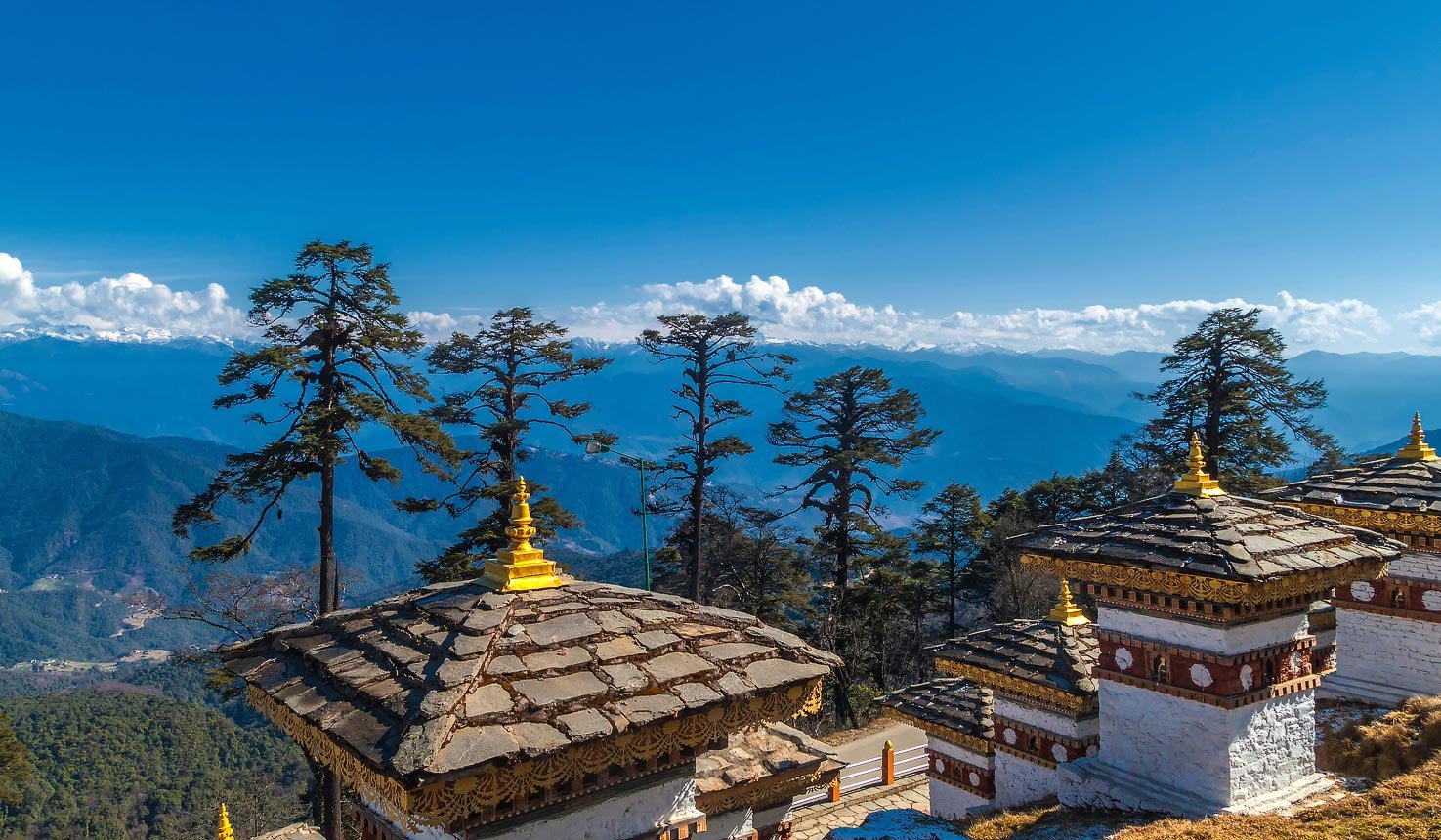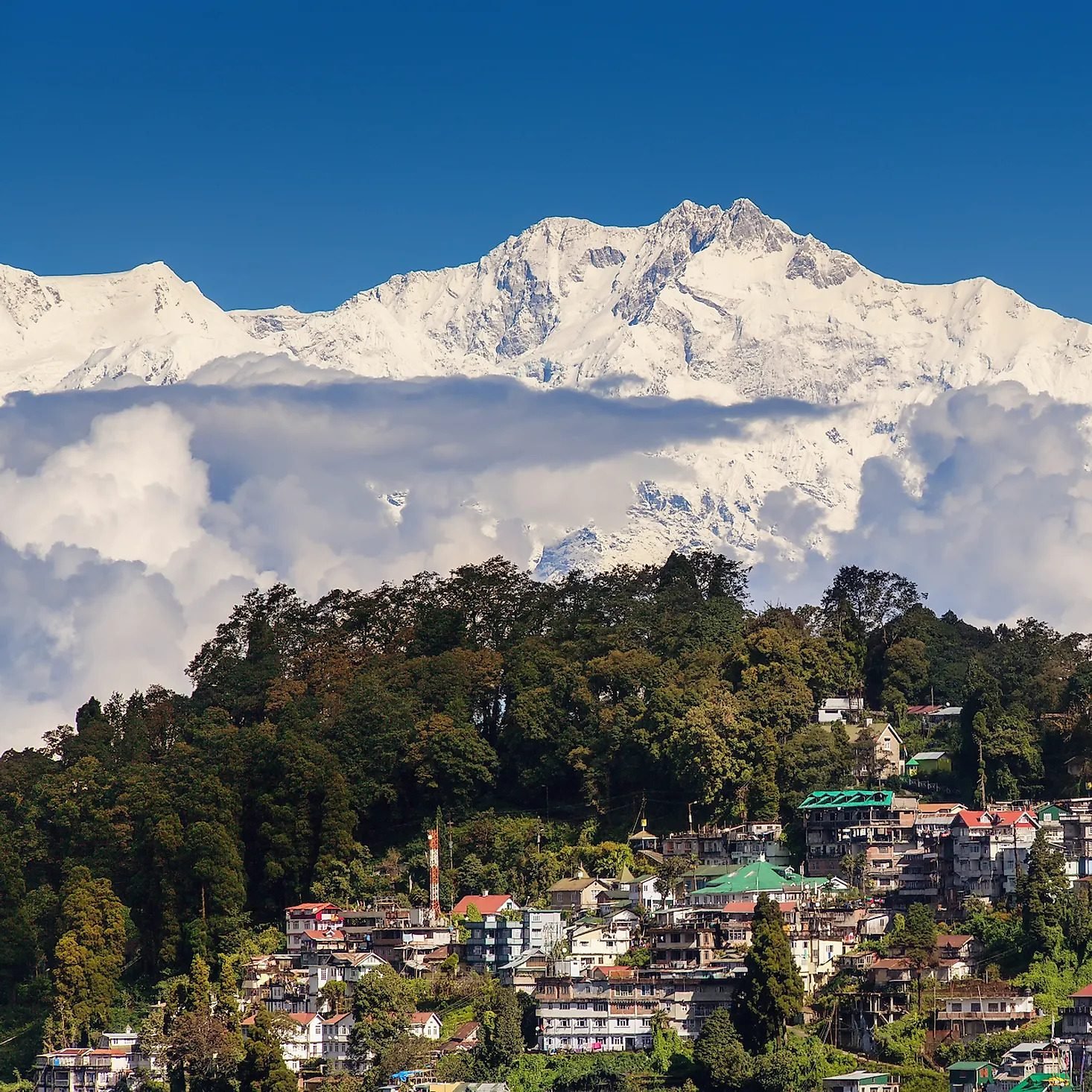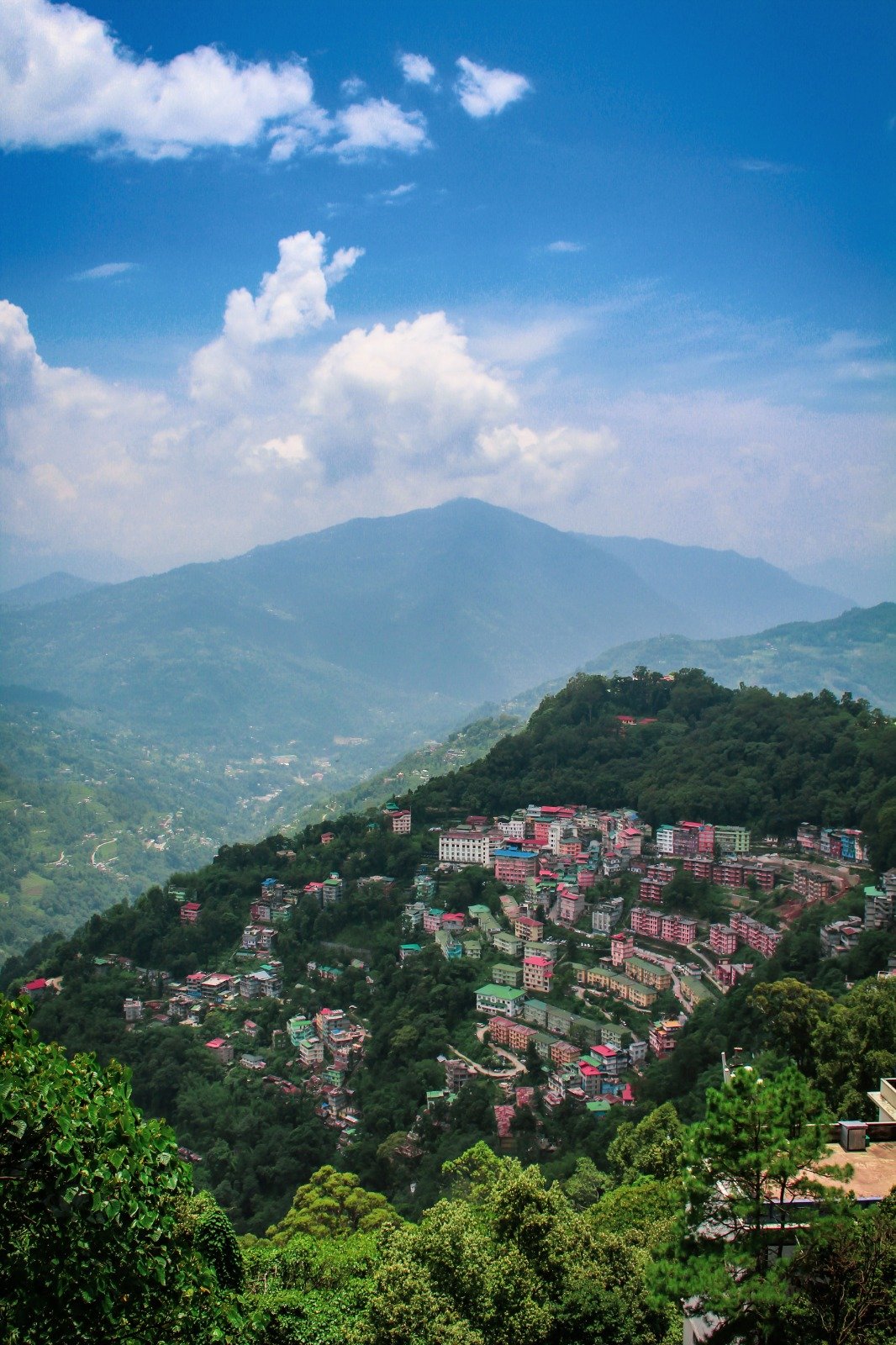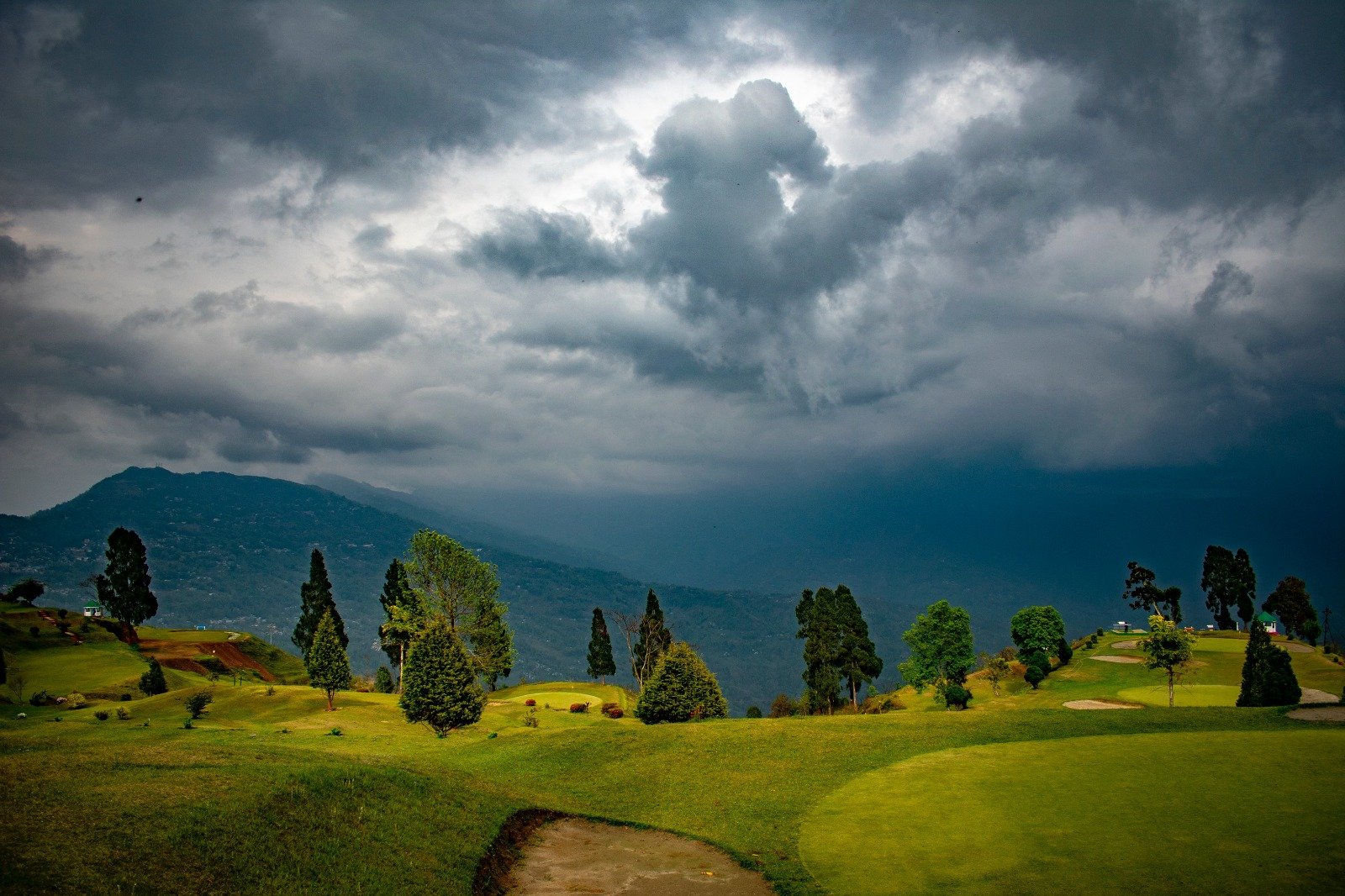PLACES TO VISIT IN THIS REGION
Created in 1956 from the princely state of Mysore, Karnataka – a derivation of the word karu nadu meaning “black soil” in the local language, Kannada – marks a transition zone between central India and the Dravidian deep south. Along its borders with Maharashtra, Andhra Pradesh and Telangana, a string of medieval walled towns studded with domed mausoleums and minarets recall the era when this part of the Deccan was a Muslim stronghold. The coastal and hill districts that dovetail with Kerala are, in contrast, quintessential Hindu south India, lush with tropical vegetation and soaring temple gopuram. In between are scattered several extraordinary sites, notably the ruined Vijayanagar city at Hampi, whose lost temples and derelict palaces stand amid an arid, rocky landscape of surreal beauty.
Places to visit in Karnataka
Fed by the southwest monsoon and draped in dense deciduous forests, the Western Ghats, recognized among the world’s top eight biodiversity hotspots, run in an unbroken line along the state’s palm-fringed coast, impeding the path of the rain clouds east. As a result, the landscape of the interior – comprising the southern apex of the triangular Deccan trap, known as the Mysore Plateau, is considerably drier. Three of south India’s most sacred rivers, the Kaveri (also spelt Cauvery), Tungabhadra and Krishna, flow across this sun-baked terrain, draining east to the Bay of Bengal.
Karnataka’s principal attractions are concentrated at opposite ends of the state, with a handful of less-visited places dotted along the coast between Goa and Kerala. Road and rail routes dictate that most itineraries take in the brash state capital, Bengaluru (Bangalore), a go-ahead, modern city that epitomizes the aspirations of the country’s new middle class, with glittering malls, fast-food outlets and nightlife unrivalled outside Mumbai. The state’s second city, Mysuru (Mysore), appeals more for its Raj-era ambience, nineteenth-century palaces and vibrant produce and incense markets. It also lies within easy reach of several important historical monuments.
A clutch of unmissable sights lie further northwest, dotted around the dull railway town of Hassan. Around nine centuries ago, the Hoysala kings sited their grand dynastic capitals here, at the now middle-of-nowhere villages of Belur and Halebidu (Halebid), where several superbly crafted temples survive intact. More impressive still, and one of India’s most extraordinary sacred sites, is Gomateshwara, the 18m Jain colossus at Sravanabelagola, which stares serenely over idyllic Deccan countryside.
West of Mysuru, the Ghats rise in a wall of thick jungle cut by deep ravines and isolated valleys. Within, the coffee-growing district of Kodagu (Coorg) offers an entrancing, unique culture and lush, misty vistas. Most Coorg agricultural produce is shipped out of Mangaluru (Mangalore), a useful stopover on the journey along Karnataka’s beautiful Karavali coast. Interrupted by countless mangrove-lined estuaries, the state’s 320km-long coastline contains plenty of fine beaches. Attractions of the coastal belt include the famous Krishna temple at Udupi, an important Vaishnavite centre, Jog Falls – India’s second highest cataract – set amid some of the region’s most spectacular scenery, though for many the region’s biggest draw is the atmospheric Hindu pilgrimage town of Gokarna, further north up the coast, a well-established hideaway for Western budget travellers owing to its string of exquisite beaches.
However, the state’s undisputed highlight lies in the hinterland of northern Karnataka: the UNESCO-listed ghost city of Vijayanagar, better known as Hampi. Scattered around boulder hills on the south banks of the Tungabhadra River, the ruins of this once splendid capital provide a magical setting, often prompting travellers to overstay. The main access point to Hampi is Hosapete (Hospet), from where buses leave for the journey north across the rolling Deccan plains to Badami, Aihole and Pattadakal, the last another UNESCO World Heritage Site. Now lost in countryside, these tiny villages – once capitals of the Chalukya dynasty – are still littered with ancient rock-cut caves and finely carved stone temples.
Further north, in one of Karnataka’s most remote and poorest districts, craggy hilltop citadels and crumbling wayside tombs herald the formerly troubled buffer zone between the Muslim-dominated northern Deccan and the Dravidian-Hindu south. Bijapur, capital of the Bahmanis – now formally Vijayapura – harbours south India’s finest collection of Islamic architecture, including the world’s second-largest freestanding dome, the Gol Gumbaz. The first Bahmani capital, Gulbarga (now Kalaburagi) site of a famous Muslim shrine and theological college, has retained little of its former splendour but the more isolated Bidar, where the Bahmanis moved in the sixteenth century, deserves a detour en route to or from Hyderabad. Perched on a rocky escarpment, its crumbling red ramparts include Persian-style mosaic-fronted mosques, mausoleums and a sprawling fort complex evocative of Samarkand on the Silk Route.
Brief history of Karnataka
Like much of southern India, Karnataka has been ruled by successive Buddhist, Hindu and Muslim dynasties. The influence of Jainism has also been marked; India’s very first emperor, Chandragupta Maurya, is believed to have converted to Jainism in the fourth century BC, renounced his throne and fasted to death at Sravanabelagola, now one of the most visited Jain pilgrimage centres in the country.
During the first millennium AD, this whole region was dominated by power struggles between the various kingdoms controlling the western Deccan. The period between the third and fifth centuries saw the rise of dynasties like the Satavahanas, the Kadambas and the Gangas of Talakad. From the sixth to the eighth centuries, the Chalukya kingdom of Vatapi (Badami) included Maharashtra, the Konkan coast on the west and the whole of Karnataka. The Rashtrakutas and the Hoysalas dominated until the thirteenth century, when the Deccan kingdoms were overwhelmed by General Malik Kafur, a convert to Islam.
By the medieval era, Muslim incursions from the north laid the foundation of the Bahmani kingdom and forced the hitherto warring and fractured Hindu states of the south into close alliance, with the mighty Vijayanagar kings emerging as overlords. Their lavish capital, Vijayanagar, ruled an empire stretching from the Bay of Bengal to the Arabian Sea and south to Cape Comorin. The Bahmani empire split into five independent kingdoms in 1490 but joined forces as a confederacy, the Deccan Sultanate, in 1565 at the Battle of Talikota, and laid siege to Vijayanagar, plundering its opulent palaces and temples.
Thereafter, a succession of Muslim sultans held sway over the north, while in the south of the state, the independent Wadiyar rajas of Mysore, whose territory was comparatively small, successfully fought off the Marathas. In 1761, the brilliant Muslim campaigner Haider Ali, with French support, seized the throne. His son, Tipu Sultan, turned Mysore into a major force in the south before he was killed by the British at the battle of Srirangapatnam in 1799. After Tipu’s defeat, the British restored the Wadiyar family to the throne. Apart from a further half century of colonial rule in the mid-nineteenth century, they kept it until Karnataka was created by the merging of the states of Mysore and the Madras Presidencies in 1956.
Best time to visit Karnataka
Coastal Karnataka is one of the wettest regions in India, its climate dominated by the seasonal monsoon, which sweeps in from the southwest in June, dumping an average of 4m of rain on the coast before it peters out in late September. October to April is therefore the best time to visit. Bengaluru and Mysuru, to the south of the Deccan Plateau, have a temperate climate with mild weather most of the year. The northern tracts and the coast get really hot in summer (April–June), with monsoon bringing some respite between July and October.
Festivals in Karnataka
- Hampi Utsav (early to mid-Jan)Celebrated since Vijayanagar times and revived by the Government of Karnataka, this three-day festival is a cultural showcase of music, dance, costume dramas, puppet shows, fireworks, processions and kushti (wrestling) that once received royal patronage.
- Makar Sankranti (mid-Jan)The transition of the sun into the zodiacal sign of Makara (Capricorn) is when the harvest festival (suggi habba) is celebrated. Temple festivities, cultural programmes and kite-flying, especially in northern Karnataka, mark the occasion.
- Bangalore Karaga (April)Bengaluru’s oldest festival is celebrated over eleven days around the Dharmaraya Swamy Temple in the old city. The festival honours Draupadi, considered a form of Shakti, and is named after the karaga or large floral pyramid borne by the appointed carrier during a night-time procession to the accompaniment of music and acrobatics.
- Mysore Dasara (Sept/Oct)The biggest of them all, Karnataka’s naadahabba (state festival) culminates in a grand procession on its tenth and final day.
- Kadalekai Parishe (Dec/Jan)Bengaluru’s unique groundnut fair, held near the Bull Temple in Basavanagudi with rural produce on sale.
Hassan and around
The nondescript town of Hassan, 118km northwest of Mysuru, is visited in large numbers because of its proximity to the Hoysala temples at Belur and Halebidu, both northwest of the town, and the Jain pilgrimage site of Sravanabelagola to the southeast. Some travellers end up staying a couple of nights but with a little forward planning you shouldn’t have to linger for long, as Belur, Halebidu and Sravanabelagola, deep in the serene Karnataka countryside, offer more appealing surroundings.
Halebidu (Halebid)
Now little more than a scruffy village of brick houses and chai stalls, Halebidu (Halebid), 32km northwest of Hassan, was the second capital of the powerful Hoysala dynasty, which held sway over south Karnataka from the eleventh until the early fourteenth centuries and its peak stretched from coast to coast. Once known as Dora Samudra (Gateway to the Sea), the capital city became Hale-bidu, or “Old City”, after successive raids by the Delhi sultanate between 1311 and 1326 reduced it to rubble. Despite the sacking, several large Hoysala temples survive, two of which, the Hoysaleshvara and Kedareshvara, are superb, covered in exquisite carvings. Note that Belur has superior facilities to those found in Halebidu, making it a far better base for exploration of the Hoysala region.
Belur
Belur, 37km northwest of Hassan, on the banks of the Yagachi River, was the Hoysala capital prior to Halebidu, during the eleventh and twelfth centuries. Still in active worship, the Chennakeshava temple is a fine and early example of the singular Hoysala style, built by King Vishnuvardhana in 1117 to celebrate his conversion from Jainism, victory over Chola forces at Talakad and his independence from the Chalukyas. Today, its grey-stone gopura, or gateway tower, soars above a small, bustling market town – a popular pilgrimage site from October to December, when busloads of Ayappan devotees stream through en route to Sabarimala. The car festival held around March or April takes place over twelve days and has a pastoral feel, attracting farmers from the surrounding countryside who conduct a bullock cart procession through the streets to the temple.
Sravanabelagola
The sacred Jain site of Sravanabelagola, 49km southeast of Hassan and 93km north of Mysuru, consists of two hills and a large tank. On one of the hills, Indragiri (also known as Vindhyagiri), stands an extraordinary 18m-high monolithic statue of a naked male figure, Gomateshvara. Said to be the largest freestanding sculpture in India, this tenth-century colossus, visible from kilometres away, makes Sravanabelagola a key pilgrimage centre. At the Mahamastakabhisheka or “great head anointing ceremony”, held every twelve years, devotees congregate to pour libations over the statue. The next will be held in 2030. Spend a night or two in the village, and you can climb Indragiri Hill before dawn to enjoy the serene spectacle of the sun rising over the sugar cane fields and outcrops of lumpy granite that litter the surrounding plains – an unforgettable sight.
North of Mangalore: coastal Karnataka
Whether you travel the Karnataka (Karavali) coast on the Konkan Railway or along the busy NH-17, southern India’s smoothest highway, the route between Goa and Mangaluru ranks among the most scenic anywhere in the country. Crossing countless palm- and mangrove-fringed estuaries, the railway line stays fairly flat, while the recently upgraded road, dubbed by the local tourist board as “The Sapphire Route”, scales several spurs of the Western Ghats, which here creep to within a stone’s throw of the sea, with spellbinding views over long, empty beaches and deep blue bays. Highlights are the pilgrim town of Udupi, site of a famous Krishna temple, and Gokarna, another important Hindu centre that provides access to exquisite unexploited beaches. A decent inland road winds through the mountains to Jog Falls, India’s biggest waterfall, which can also be approached from the east.
Kambla (buffalo racing)
If you’re anywhere between Mangaluru and Bhatkal from October to April and come across a crowd gathering around a waterlogged paddy field, chances are they’re there to watch the spectacular rural sport of Kambla, or buffalo racing. It’s a centuries-old tradition unique to Dakshina Kannada, the southernmost district of coastal Karnataka.
Two contestants, usually local rice farmers, take part in the race, riding on a wooden plough-board tethered to a pair of buffaloes. The object is to reach the opposite end of the field first, but points are also awarded for style, and riders gain extra marks – and roars of approval from the crowd – if the muddy spray kicked up from the plough-board splashes the special white banners, or thorana, strung across the course at a height of 6–8m. In simpler formats of the competition contestants may be tugged by a single buffalo, connected by a rope or even hold the animal’s tail.
Generally, race days are organized by wealthy landowners on fields specially set aside for the purpose. Villagers flock in from all over the region, as much for the fair (shendi), as the races themselves: men huddle in groups to watch cockfights (korikatta), women haggle with bangle sellers and kids roam around sucking sticky kathambdigoolay, the local bonbons. It is considered highly prestigious to be able to throw such a party, especially if your buffaloes win any events or, better still, come away as champions. Pampered by their doting owners, racing buffaloes are massaged, oiled and blessed by priests before big events, during which large sums of money are often won and lost. In recent years, however, the sport has come under the scanner of animal activists leading to a request for a ban on the practice by the Animal Welfare Board of India, though time will tell whether a law will be enforced.
Hosapete (Hospet)
Charmless Hospet, now reverted to its traditional name of Hosapete (“New City”), about ten hours from both Bengaluru and Goa, is of little interest except as the jumping-off place for the extraordinary ruined city of Hampi (Vijayanagar), 13km northeast. If you arrive really late, or want a more upmarket hotel, it makes sense to stay here and catch a bus or auto-rickshaw out to the ruins the following morning.
Badami, Aihole and Pattadakal: Monuments of the Chalukyas
Now quiet villages, Badami, Aihole and Pattadakal, the last a UNESCO World Heritage Site, were once the capital cities of the Chalukyas, who ruled much of the Deccan between the fourth and eighth centuries. The astonishing profusion of temples in the area beggars belief. Badami’s and Aihole’s cave temples, stylistically related to those at Ellora, are some of the most important of their type. Among the many freestanding temples are some of the earliest in India, and at Pattadakal, uniquely, it is possible to see both northern (nagara) and southern (Dravida) architectural styles side by side, besides the vesara, a fusion of the two.
Badami
Surrounded by a yawning expanse of flat farmland, Badami, capital of the Chalukyas from 543 AD to 757 AD, extends east into a gorge between two red sandstone hills, topped by an ancient fortified complex. The southern hill is riddled with cave temples, while the northern one is studded with early structural temples and fort remains. Beyond the village, to the east, is an artificial lake, Agastya Teertha, said to date from the fifth century. Badami’s small selection of hotels and restaurants makes it an ideal base from which to explore the Chalukyan remains at Aihole and Pattadakal, as they do not possess such facilities. Be aware that the whole Badami area is home to numerous troupes of monkeys, especially around the monuments, and they will crawl all over you if you carry food.
Aihole
No fewer than 125 temples, dating from the Chalukyan and the later Rashtrakuta periods (sixth to twelfth centuries), are found in the tiny village of Aihole (Aivalli), near the banks of the River Malaprabha. Lying in clusters within the village, in surrounding fields and on rocky outcrops, many of the temples are remarkably well preserved. Reflecting both its geographical position and spirit of architectural experimentation, Aihole boasts northern (nagara) and southern (Dravida) temples, as well as variants that failed to survive subsequent stylistic developments.
Two of the temples are rock-cut caves dating from the sixth century. The Hindu Ravalaphadi cave, northeast of the centre, a Shiva shrine with a triple entrance, contains fine sculptures of Mahishasuramardini, a ten-armed Nateshan (the precursor of Nataraja) dancing with Parvati, Ganesh and the Sapta Matrikas (“seven mothers”). A two-storey cave, plain save for decoration at the entrances and a panel image of Buddha in its upper veranda, can be found partway up the hill to the southeast, overlooking the village. At the top of that hill, the Jain Meguti temple, which may never have been completed, bears an inscription on an outer wall dating it to 634 AD. You can climb up to the first floor for fine views of Aihole and the surrounding country.
Pattadakal
On a bend in the River Malaprabha 22km northeast of Badami, the village of Pattadakal served as the site of Chalukyan coronations between the seventh and eighth centuries; in fact, it may have been used solely for such ceremonies. Like Badami and Aihole, the area boasts fine Chalukyan architecture, with particularly large mature examples; as at Aihole, both northern and southern styles can be seen. Pattadakal’s main group of monuments stand together in a well-maintained temple compound, next to the village, and have been designated a UNESCO World Heritage Site. The site is used for a major annual dance festival at the end of January or early February.
Vijayapura (Bijapur) and the north
The dry and dusty far northern region of Karnataka is as distinct culturally as it is in terms of landscape. Predominantly Muslim, at least in the larger settlements, it boasts some wonderful Islamic architecture and shrines in the venerable city of Bijapur, or Vijayapura, bustling Kalaburagi (Gulbarga) and rather forlorn Bidar.
Vijayapura (Bijapur)
Boasting some of the Deccan’s finest Muslim monuments, Bijapur – now officially Vijayapura – is often billed as “the Agra of the South”. The comparison is partly justified: for more than three hundred years, this was the capital of a succession of powerful rulers, whose domed mausoleums, mosques, colossal civic buildings and fortifications recall a lost golden age of unrivalled prosperity and artistic refinement. Yet there the similarities between the two cities end. A provincial market town of around 300,000 inhabitants, modern Vijayapura is a world away from the urban frenzy of Agra. With the exception of the mighty Gol Gumbaz, which attracts busloads of day-trippers, its historic sites see only a slow trickle of tourists, while the ramshackle town centre is surprisingly laidback, dotted with peaceful green spaces and colonnaded mosque courtyards. In the first week of February the town hosts an annual music festival, which attracts several renowned musicians from both the Carnatic (south Indian) and the Hindustani (north Indian) classical music traditions.
Kalaburagi (Gulbarga)
Gulbarga, officially renamed Kalaburagi, 165km northeast of Vijayapura, was the founding capital of the Bahmani dynasty and the region’s principal city before the court moved to Bidar in 1424. Later captured by the Adil Shahis and Mughals, it has remained a staunchly Muslim town, and bulbous onion domes and mosque minarets still soar prominently above its ramshackle concrete-box skyline. The town is also famous as the birthplace of the Sufi saint, Hazrat Gesu Daraz (1320–1422), whose tomb, situated next to one of India’s foremost Islamic theological colleges, is a major shrine.
In spite of Kalaburagi’s religious and historical significance, its monuments pale in comparison with those at Vijayapura, or even Bidar. Unless you’re particularly interested in medieval Muslim architecture, few are worth breaking a journey to see.
Bidar
Lost in the far northeast of Karnataka, Bidar, 284km northeast of Vijayapura, is a provincial backwater, known for its fighter-pilot training base, gently decaying monuments and the most important Sikh shrine in Karnataka. The town, half of whose 210,000-strong population is Muslim, has a gritty charm, with narrow red-dirt streets ending at arched gates and open vistas across the plains. Littered with tile-fronted tombs, rambling fortifications and old mosques, it merits a visit if you’re travelling between Hyderabad (150km east) and Vijayapura, although you should expect little in the way of Western comforts, and lots of curious approaches from locals. The heart of Bidar is its medieval old town, encircled by crenellated ramparts and eight imposing gateways (darwazas). This predominantly Muslim quarter holds many Bahmani-era mosques, havelis and khanqahs – “monasteries” set up by the local rulers for Muslim cleric-mystics and their disciples.




